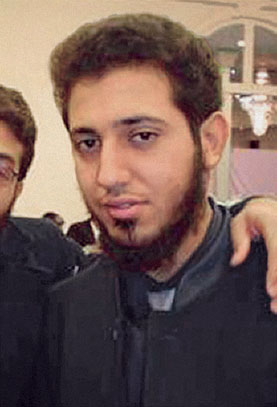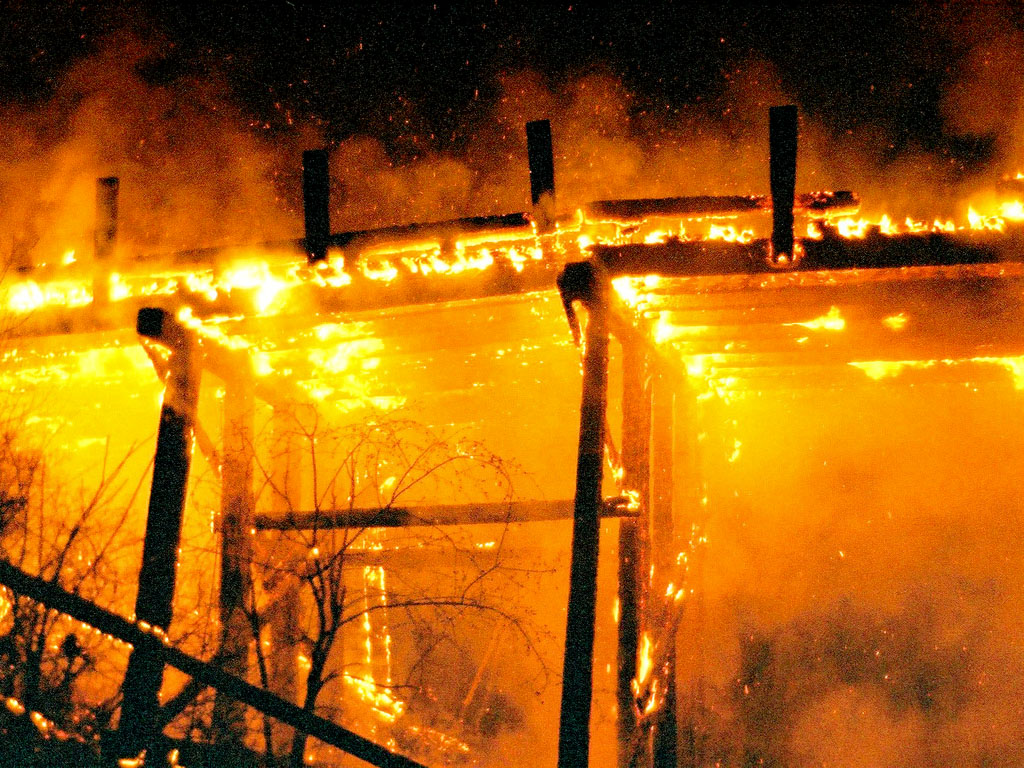Hugo, a movie well worth attending
On the recommendation of friends Garth and Esther Dunn, Lynn and I trotted out for our semi-regular Friday Night Dinner and Movie Date but instead of Friday we headed out Thursday to the Academy Award Winner Hugo.
Academy Award Winner Hugo.
The movie did not disappoint as the mixture of fantasy, reality, young, old, love, tragedy and the evolution of life, was juxtaposed with award winning sound, cinematography and visual effects that left us captivated from the opening scenes to the very end of the 127 minute production.
The only part we both still have trouble adjusting to is the 3D effects, although in this movie I think most would appreciate the stunning visual impact.
From a book Hugo Cabret, four thumbs up (with Garth and Esther that makes eight) to Marten Scorsese (another hit), Asa Butterfield (photo above) and Chloe Moretz (two kids in their early teens facing off against adults), Ben Kingsley (a convincing old man who felt his life’s work had been lost in a sea of change), Sacha Cohen (actually very well acted by Cohen who is cast in a more serious and touching role) as well as a host of others. Oscar wins: Cinematography, Art Direction, Sound Direction, Sound Mix, and Visual Effects.
(413)
Southeast Asia: A Magical Journey
Photo (Web Stock): Ha Long Bay is 120 km long, 1553 Km2 and
contains 1969 Islands formed from limestone karsts,
many of which are filled with expansive caves.
EXCLUSIVE ESCORTED TOUR TO VIETNAM, CAMBODIA
AND THE RICHES OF THE MEKONG RIVER
Expedia CruiseShipCenters, Sidney, British Columbia, invites you to join an exclusive Escorted Cruise to Vietnam, Cambodia and the riches of the Mekong River.
Note: Photos in this blog post taken from the Web.
From September 18 – October 3, 2012, you will be hosted, first on a seven day land tour beginning in Hanoi and then on a seven day river cruise, beginning in Siem Reap, then meanders along the Mekong River to Ho Chi Minh City (Saigon). On both arms of the tour you will be hosted on several side tours during which you will be exposed to the best the two countries have to offer. A three day pre-tour extension of Hong Kong is also available from September 15-18. (Tour details provided at the end of this article.)
(803)
New Orleans, the Gulf of Mexico and Caribbean
Canadians Invade New Orleans: Seize Navigator of the Sea’s

Photo: SIC Beauty members with the Cruise Director: An important thing to do on any cruise is to become friends with the Cruise Director.
This post begins with the second part of our holiday when our twenty-two member travel crew joined forces aboard the Navigator of the Seas. Rather than provide a traditional look at life aboard the ship, I have worked to provide a flavour of the special times and friendships that emerge when people actively seek out others to share their festivities.
There is little doubt that upon our departing from the Navigator, there will be a good percentage of the passengers and crew on board who will remember the fun-loving Canadians. While I have drawn attention to some our antics, it was all good clean fun on this special family holiday.
(1845)
Terrorists or Warriors, what is the difference?
Terrorists or Warriors, what is the difference?
Is it religion, ethnicity, or just a matter of definition?
In 2006, at the same time radicalized Six Nations members were occupying the Douglas Street Estates in Caledonia, another event was taking place less than 200 kilometers Northeast in the Greater Toronto area. In the GTA, eighteen men, reported to be radicalized Islamists, were being kept under intense surveillance by the RCMP and CSIS.
Following the arrest of the Islamists for allegedly planning a terrorist attack, the group became internationally known as the Toronto 18. The arrests brought a deluge of accolades, particularly from the US Secretary of State, Condoleezza Rice as well as other US and world leaders.
Prior to this arrest, heated rhetoric emanating from the US, accused Canada of being ‘soft’ on terrorists and having a border filled with holes. Despite the fact we had suffered only one major terrorist attack in the past century, that being the Air India bombing, the US felt Canada needed to be doing more to combat terrorism as it was defined by the US following the attack on the World Trade Centre. That Canada had not joined the war in Iraq remained another sore point in Canada/US relations.
Meanwhile, in the parallel Caledonia case, law and order began to fall apart when heavily armed and masked Six Nations ‘Warriors’ invaded and secured the Douglas Street Estates, a nearly completed housing development on the outskirts town. When the police did nothing to restore law and order on Estate property, the owners obtained a court order directing the OPP to dislodge the Six Nations Warriors.
After making one poorly planned and executed assault, the police, heavily outgunned and outnumbered, were easily repelled by the Warriors. It was a humiliating defeat for the OPP and one from which they would not recover. Following the raid, the Court orders to remove the warriors from the Estate properties were quietly left to rot on the OPP Commissioner Julian Fantino’s desk.
Even as people were being assaulted and hospitalized, Commissioner Fantino would not remove his order to his officers to “stand-down”. Those officers who chaffed at being restricted from arresting those found committing criminal offences and those who openly criticized the Commissioner’s order were removed from duty at the site and sent to some outpost to continue their career as a ‘red circled’ officer.
The Toronto 18 Terrorist Group
Back in Toronto, as bits of information were released by CSIS and the RCMP about the arrest of the Toronto 18 “terrorists’, the 18 men became widely known in Canada and around the world for the ineptitude of their Tim Horton’s planning sessions and the haphazard manner by which they went about recruiting members, several of whom were wide-eyed teenagers seduced by the glory of joining the jihadist cause. In the eyes of many, the whole episode reeked of political opportunism and police entrapment designed to show that Canada was a player in the fight against terrorism.
In one news report the Crown’s key witness, Mubin Shiakh (pictured right) recruited as an “agent provocateur” who infiltrated the group, made it clear the whole episode, while dangerous and could have resulted in death, was far from being a well planned terrorist event. The following is taken from the news report:
Having infiltrated what became known as the Toronto 18, he (Mubin Shiakh) doesn’t believe they (the Toronto 18) were capable of pulling off their ambitious plan to storm Parliament, set off bombs and behead our prime minister. But he believes that whatever course they settled on, it would have meant the destruction of human life.
Transcripts and stories about the setup of a radical training camp, in Washago, include a lot of trips to Tim Horton’s. The wannabe terrorists had a thing for French Vanilla coffee and hot chocolate.
“If you want to deal with terrorism,” Shaikh grins, “set up a Tim Horton’s.”
Before testifying, he asked for more money. But he says it was never conditional to his testimony. The idea he intentionally set these people up for profit seems laughable. Maybe I’m just not a risk-taker, but of all the get-rich-quick schemes, pissing off terrorists seems a notch below throwing yourself in front of a bus for the insurance. They may have been goofballs, prompted by jihadist propaganda, but goofballs attempting to acquire bombs.
In another account, McLean’s Magazine spoke about a second informant, Shaher Elsohemy (pictured right), who was paid millions of dollars for his testimony. While McLean’s, as expected, took a hard-nosed view toward the terrorists and their capabilities, the introductory paragraphs provide a bit of insight into the motivations of the informants:
When his testimony wraps up in the coming days, the man once known as Shaher Elsohemy will step off the stand and disappear back into the arms of the witness protection program. For obvious reasons, nothing about his new life can be revealed. Not his fake name. Not his whereabouts. Nothing. But one thing is absolutely certain: when he does leave the witness box and return to a location unknown, he can walk away a happy man—vindicated, finally, after all these years.
Until last week, when he showed his face for the first time since 2006, Elsohemy was famous for two things: helping the RCMP topple the so-called “Toronto 18,” and being paid millions of dollars in the process. For more than three years, the Mounties’ star informant had to stay hidden in the shadows while countless fellow Muslims attacked his credibility. They called him a traitor. A rat. A money-hungry liar who deserves to “suffer in this life and the next.”
Let us accept that at least some of the Toronto 18 might be defined as bonafide terrorists and, left to their own devices, may have mounted some kind of serious attack. However, at the time of arrest, the eighteen had not yet harmed a hair on anyone’s head and had not damaged any property. In a normal investigation, they would most certainly have been charged with Conspiring to Commit an Indictable Offence with various sub-offences being listed in the indictment.
However, this was not the outcome as these men were Muslims and that fact alone lead to their being defined as “terrorists” as opposed to “criminals’. The result, they were charged under Canada’s new Terrorism Act, an Act that changed many of the rules of evidence, created much greater secrecy and provided more severe penalties.
One has only to scan the charges to see just how vague they had become as opposed to equivalent charges in the Criminal Code. Following is the disposition of 11 of the 18 cases:
Zakaria Amara
Guilty plea, October 2009, Appeal dismissed 2010
Participating in a terrorist group, intending to cause an explosion for the benefit of a terrorist group
Life in prison
Saad Khalid
Guilty plea, May 2009
Participating in a militant plot with the intention of causing an explosion
20 years in prison
Fahim Ahmad
Guilty plea, October 2010
Importing firearms, participating in a terrorist group and instructing others to carry out activities for that group
16 years in prison
Saad Gaya
Participating in a militant plot with the intention of causing an explosion
Guilty plea, September 2009, Appeal allowed 2010
12 to 18 years in prison
Steven Chand
Participating in a terrorist group
Convicted, June 2010
10 years in prison
Ali Dirie
Participating in a terrorist group
Guilty plea, September 2009
7 years in prison
Amin Durrani
Participating in a terrorist group
Guilty plea, January 2010
7½ years in prison
Jahmaal James
Participating in a terrorist group
Guilty plea, February 2010
7 years in prison
Asad Ansari
Participating in a terrorist group
Convicted, June 2010
6½ years in prison
Nishanthan Yogakrishnan
(previously tried as a youth, publication ban lifted on his name in September 2009)
Participating in and contributing to a terrorist group
Convicted, September 2008
2½ years in prison
Shareef Abdelhaleem
Participating in a terrorist group and intending to cause an explosion
The decision not yet handed down.
Charges Stayed in the Following Cases
Ibrahim Aboud
Participating in a terrorist group, training for terrorist purposes
Charges stayed, April 2008
Ahmad Mustafa Ghany
Participating in a terrorist group, training for terrorist purposes
Charges stayed, April 2008
Abdul Qayyum Jamal
Planning to cause a deadly explosion (dropped in November 2007), participating in the activities of a terrorist group and receiving training from a terrorist group.
Charges stayed, April 2008
Yasim Mohamed
Participating in a terrorist group, training for terrorist purposes
Charges stayed, April 2008
Youth 2
Participating in a terrorist group, receiving training to be part of a terrorist group
Charges stayed, February 2007
Youth 3
Participating in a terrorist group, receiving training to be part of a terrorist group
Charges stayed, July 2007
Youth 4
Participating in a terrorist group, receiving training to be part of a terrorist group
Charges stayed, July 2007
Media outlets were severely restricted as to what they could publish about the case in that they could only report on evidence given in court. Even the preliminary hearing was cut short after Mubin Shiakh had given evidence. The case had then been sent to trial by direct indictment. Between guilty pleas and charges that were stayed the full story was never made public.
The Caledonia Terrorists
In Caledonia, the Six Nations Warriors had completed planning that went well beyond that completed by the Toronto 18. They had stockpiled numerous weapons and sufficient ammunition to start a small war, invaded a small community that was part of Caledonia, dug trenches across main highways, built barricades,  burned bridges, torched a Hydro Station, burned cars, fired shots and assaulted people, as a shortlist of their activities. They dressed in camouflage gear, wore masks to shield their identity, flew “their” nation’s flag, tore down and burned Canadian Flags. They confronted police and residents at every opportunity. For a visual of some of these events go to the Photo Gallery at the end of the Caledonia Post.
burned bridges, torched a Hydro Station, burned cars, fired shots and assaulted people, as a shortlist of their activities. They dressed in camouflage gear, wore masks to shield their identity, flew “their” nation’s flag, tore down and burned Canadian Flags. They confronted police and residents at every opportunity. For a visual of some of these events go to the Photo Gallery at the end of the Caledonia Post.
Only one charge was ever laid against any of the Warriors and that charge, Assault Causing Bodily Harm, was finally disposed of last year with the conviction of a man who was 18 at the time of the offence (22 at the time of conviction). He was sentenced to 18 months, so with time served he had spent less than a year in jail.
How could it be that one group of Canadian Citizens were left to walk free while another group of Canadian Citizens are now serving sentences that range up to life in prison for planning (rather poor planning) of an event that never came close to being carried out? Had those involved in Caledonia been Muslims, the outcome would have been very, very different. There would now be dozens of First Nations Muslims serving life in prison for “terrorist’ acts.
We should all be concerned about differential law enforcement in Canada. Why should Muslim Canadians be treated differently just because they are Muslims, of which a few (very few) are radicalized Islamists? On the other hand, why should Canadians, just because they are radicalized First Nations and feel their cause is just, be allowed to disregard the law with impunity.
Caledonia is no different from hundreds of other communities across Canada that depend upon the Government, Police and Courts to uphold the law in a fair and equitable manner. When all three levels abdicate that responsibility and anarchy is allowed to rein, as it was (and is) in Caledonia, respect for our institutions of law and order is greatly diminished.
Harold McNeill
Victoria, BC
Food for Thought:
Over the history of our country, a variety of immigrant groups have been subjected to various forms of discrimination. The Chinese, Japanese, German’s, Italians, Irish, Scottish and the list goes on depending on the decade and the particular status of the group in the dominant society, have each shouldered their fair share.
Since 911 Muslims, East Indians and others have shouldered the greatest burden of discrimination. For a variety of reasons, Native Indians have been marginalized and discriminated against from the very beginning.
Discrimination should be the reason for great concern as it diminishes our society in every way. That being said, I do not think discrimination alone is sufficient reason to become a radicalized Native, Islamist or any other particular group. To import hatred into a country that has accepted a person on good faith is simply wrong.
(1999)
Relish Tea Room in Mana, New Zealand
“Living your Dreams” is a theme that often appears on many Facebook posts, so Lynn and I are always looking for shining new examples. On our way down the West side of the North Island we stopped for tea at a picturesque little English style ‘tea room’ called the Relish Café. Located in Mana (just north of Wellington) we were met by Allan and Anne McNair, Allan being a brother of our friend, Gill Russell, (see previous Rotorua post). There we shared a few life stories over afternoon tea.
Once again, we found ourselves chatting with a couple who made a complete life change. Only a few years back, the McNairs were running a successful saddlery store which provided a comfortable income and a high degree of security for over 25 years. In addition, Allan was an experienced ferrier. Their two daughters were just finishing school and would soon be off establishing lives of their own.
experienced ferrier. Their two daughters were just finishing school and would soon be off establishing lives of their own.
A few years back, Allan began feeling the need for change – not that he was dissatisfied with his life, it was, after all, a very good life. He just wanted a new challenge and one of his dreams was to run his own restaurant. When he shared his dream with his family his oldest daughter laughed and pointed out: “Dad, you can’t even boil an egg”. Allan reluctantly conceded that point, but was quick to state: “Well then my dear daughter, I will learn.” And, over the next five years learn he did. He and Anne continued to run their saddlery and ferrier businesses, but one day each week Allan worked a full eight hour shift in a local restaurant.
Over the five years of working part time he learned what he thought he needed to know and between them the couple were ready to strike off on their own. They found a lovely little establishment in Mana (just north of Wellington) that was exactly the kind of place they had dreamed about. About one block of the highway, just accross the main South Island Railway was a small restaurant with seating for about thirty-five. A former cottage, the tables were divided into three medium sized rooms. The period furnishings gave each room a cosy warmth and the entire “cottage” was surrounded by a delightful “English Country Garden” just coming into bloom when Lynn and I arrived.
When the deal was finalized, the saddlery business was sold and the family was off on a new life adventure.
(381)
Caledonia – Dark Days for Canadian Law Enforcement
Burning the Bridges of Canadian Justice
Homes were damaged or destroyed, public and private property destroyed, businesses bankrupted, ordinary citizens intimidated, threatened, attacked and one man left for dead with permanent brain damage, families torn apart, careers ended and, as a final insult, those same citizens, while trying to defend themselves, became the subjects of police “enforcement”. (the Image Gallery at the end of this post provides a solid visual of these events)
The Rape of Caledonia
Those who have read my posts, particularly in the Editorial Section, will know I am passionate about many subjects. Although I was a policeman for 30 years, you will also know I have never backed away from critizing the police when I believed the criticism was warranted.
A few months back, I made the mistake of reading a book titled: Helpless: Caledonia’s Nightmare of fear and anarchy, and how the law failed all of us” by Christi Blatchford. Blatchford, a respected journalist for both the National Post and Globe and Mail, spent many months researching, documenting and writing on the reign of terror that engulfed the good citizens of Caledonia. You might think these things only happen in some war torn country fighting a vicious dictator, but you would be wrong and in Canada, Caledonia was that place.
(2348)
My Tim Hortons Morning Posts January 2012
Tim Hortons Posts for January 2012
January 31, 2012 The Threat of Social Media
In the 21 Century, the greatest threats Facebook, Twitter, other social media and blog sites present, is not the invasion of the privacy of individuals using those sites, but as a tool to ‘out’ the efforts of governments and giant corporations attempting to keep their dubious dealings secret and, in the worst case, of dictators trying to control entire populations. This was no better demonstrated than in the events surrounding the Arab Spring which, to this day, continues to build across the Middle East.
Social media presents an unparalleled opportunity for individuals to co-ordinate and communicate their concerns about abuses by government and corporations that once held information tightly in the vaults of secretive government agencies and in the board rooms of corporations. Insider information and leaks today can be broadcast around the world in a matter of seconds. Wikileads is a good example.
Over the coming months and years you will see governments and corporations around the world working hand in hand to pass laws that control information they consider proprietary to their vested interests. The recent attempt to close down social media sites because information was passed along that was considered proprietary, is a perfect example. It did not take long before the US Government backed off once the backlash began.
Also, you likely watched as governments around the world become apoplectic during after the most recent WikiLeaks release. They are still pursuing Julian Assange with a vengence and arranged to have several organizations cut off Wikileaks services. Yesterday seveal hackers turned the tables on some spy agencies and hacked into some very sensitive conversations about those very hackers.
Worry not about what you post (other than that which may come back to haunt you at some future date) being accessed by some inept individual or pervert or even a government, worry about your ability to freely communicate your idea’s with others. Except to fight against network posts or internet displays that cross the bounds of common decency or are clearly racist, fight censorship at every turn.
January 31, 2012 Hackers, Snoopers and Peepers
(545)
San Remo Restaurant Burglary

The San Remo Restaurant on Quadra at Hillside, has been a fixture in
Victoria for nearly 30 years. With an array of authentic Greek dishes as well Italian and American favourites, the warm and welcoming atmosphere provided by Dino, his daughter Zoi and the friendly staff makes a visit well worthwhile and repeat visists a must (see photos at end of story).
Quiet Times
It was 2:00 am Monday as I sat in my patrol car at the corner of Foul Bay Road and Fort Street working on a vexing problem. The problem? Trying to stay awake. As usual at the end of a week-end, not a thing was happening throughout the city and the radio barely crackled. You could fire a rifle down Douglas Street or along Oak Bay Ave and never fear of hitting anyone. It was nice to have an interlude, but the challenge at 2:00 am was keeping the mind occupied and off the thought of sleep.
As I whiled away the time, another car would occasionally book off with a vehicle, but nothing of consequence. I reflected back upon those times when my friends Blake Green, a Victoria Police member, and his wife Joanne, lived just a few door’s from where I was parked. The coffee pot was always on and the door open, but not a 2:00 am. The Green’s had moved in a few years back and the street, Goldsmith, was now long gone as the houses were torn down to make way for a Seniors Housing Complex and the Oak Bay Recreation Centre.
(2623)



